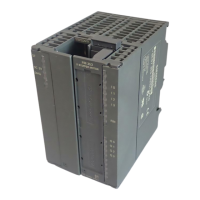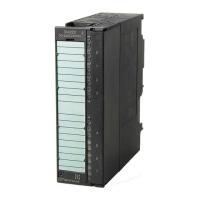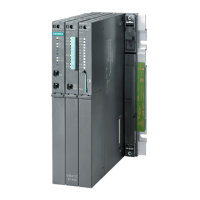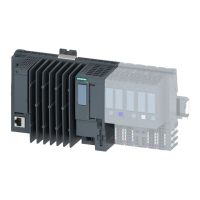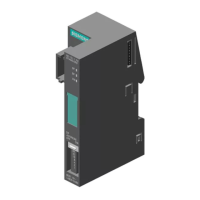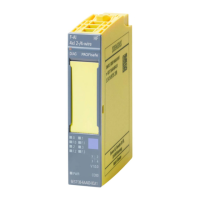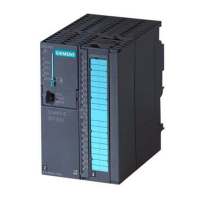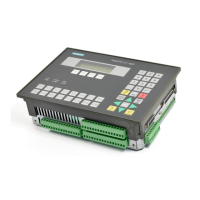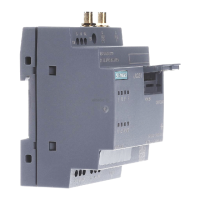8
8-3
FM 351 Positioning Function Module
EWA 4NEB 720 6001-02
In this chapter we use the mm system of units when stating the minimum
and maximum values. For determining the limits in the other systems of
units, apply the following calculation:
For the Conversion of Calculate
mm ! inches Value (inch) = Value(mm) 10
–1
mm ! degrees Value (degrees) = Value (mm) 10
–1
The encoder signals from a connected encoder are evaluated by the FM 351
and converted to the momentary system of units. For the conversion, the fol-
lowing resolution (see Chapter 8.6) is used:
If the FM 351
has counted 10 increments and
a resolution of 100 m per increment is set by the parameterized encoder
data,
this means that the axis was moved by a distance of 1 mm.
The speed is displayed in the set system of units.
The FM 351 can only process a certain number range. This number range
determines the travel range. The travel range is dependent on the resolution
and is:
from –100 m to +100 m for a resolution < 1
m
/
increment
from –1000 m to +1000 m for a resolution 1
m
/
increment
Note
For the rotary axis the following applies: The reproducibility of the reference
point is only ensured if an integer ratio exists between the incremental val-
ues for the value End of rotary axis and the value Displacement per en-
coder revolution.
With an absolute encoder the travel range is determined by the total number
of encoder steps. In addition please note:
With a linear axis the absolute encoder must at least cover the working
range.
With a rotary axis the absolute encoder must exactly cover the rotary axis
range.
System of Units in
this Chapter
Relationship be-
tween Increments
and System of
Units
Speeds
Travel Range of
Incremental
Encoders
Travel Range of
Absolute Encoders
Machine Data and Increments
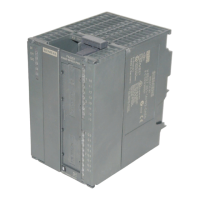
